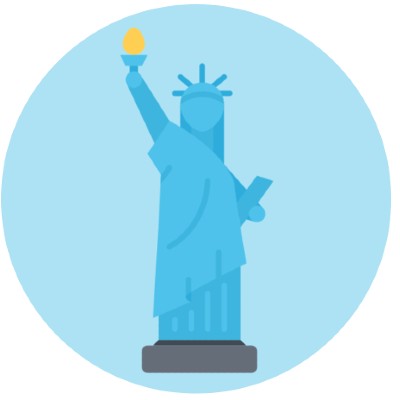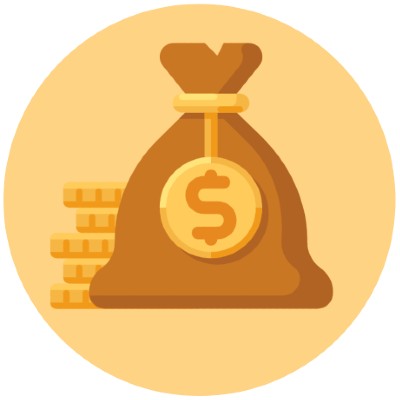It’s been two years since Gatsby’s death. Nick recalls the events connected to it. He has to arrange Jay’s funeral. Almost no people attended. There were Nick, Owl-Eyes, and Gatsby’s father. Daisy and Tom left Long Island together with no forwarding address. Nick decided to return to the Midwest.
Welcome The Great Gatsby Chapter 9 Summary & Analysis page prepared by our editorial team!
📖 The Great Gatsby Chapter 9: Summary
It’s been two years after Gatsby’s death, and Nick recalls the events surrounding the funeral. Crowds of journalists invaded the mansion after the murder. Much worse than before, surreal stories are covering Gatsby’s relationship with the Wilsons.
Nick is the only one who is on Gatsby’s side. He feels responsible for organizing the funeral because it appears that no one else will. Nick wants people to come to Gatsby’s funeral, but everyone who knew him has vanished. Tom and Daisy moved out of East Egg and didn’t leave the forwarding address. Nick tries to invite others. Meyer Wolfsheim answers that he has some business to attend to. Klipspringer claims he is busy, but he asks to send his tennis shoes left in Gatsby’s mansion.
The list of people attending the funeral is relatively short. There are Nick, Owl-Eyes, several workers, and Gatsby’s father, Henry C. Gatz. The latter has traveled a long way from Minnesota. He is wearing very cheap and old clothes, and his hands are trembling from grief. He is shocked to see all that enormous mansion of Jay’s, but he feels incredibly proud of his son. Mr. Gatz even tells Nick about Gatsby’s childhood. He shows a journal that little Jay was keeping for self-motivation and improvement.
He had a big future before him, you know. He was only a young man but he had a lot of brain power here… If he’d of lived he’d of been a great man. A man like James J. Hill. He’d of helped build up the country.
The Great Gatsby, Henry C. Gatz, Chapter 9
Nick decides to move away from the destructive immorality of the East and returns to the Midwest. He breaks things up with Jordan Baker. At their final meeting, it appears she is suddenly engaged to someone else. They argue, and Nick storms out, feeling angry.
Before he moves out, Nick comes across Tom, the discussion of Gatsby with whom is rather unpleasant. Tom says that it was he who told Wilson where to look for Myrtle’s murderer. Moreover, he is glad Gatsby is dead since he deserved it. The only thing that disappoints him is the loss of his mistress and the New York apartment he kept for the affair. Nick understands that the Buchanans are arrogant and carelessly rich. They believe that money fixes everything.
They were careless people, Tom and Daisy—they smashed up things and creatures and then retreated back into their money or their vast carelessness or whatever it was that kept them together, and let other people clean up the mess they had made…
The Great Gatsby, Nick Carraway, Chapter 9
Ears after, Nick notices how all the people from the East he encountered affected his own identity and behavior. He got used to the fast pace of life there. Nick recalls living in the Midwest again as having cozy winter holidays such as Christmas. In comparison, it is clear that the East seems ugly and distorted. However, he realizes that it is the story about the West since all the main characters are Westerners lacking some trait, which makes them “subtly unadaptable to Eastern life.”
The novel ends with Nick recalling his last visit to Gatsby’s mansion. He walks down to the beach and looks over Long Island. Picturing this land as the New World, he wonders how it was for the first explorers to see America’s “green breast.” Nick compares them to Gatsby, who was looking at the green light of Daisy’s dock across the bay. He imagines how many people are chasing the American Dream and overcoming obstacles, just like boats struggling to move against water flow.
So we beat on, boats against the current, borne back ceaselessly into the past.
The Great Gatsby, Nick Carraway, Chapter 9
🎭 Active Characters
Nick Carraway, Klipspringer, Owl-Eyes, Mr. Wolfsheim, Henry C. Gatz
🔥 Active Themes
🔬 The Great Gatsby Chapter 9: Analysis
In The Great Gatsby‘s Chapter 9 summary, Nick mentions how he perceives America. Even though being one nation, people from different geographical parts are so distinct. It may seem that the Midwest is too dull and slow compared to the shiny glitter of parties in the East. However, Nick claims that this glamour is nothing else than the cover for the lack of morality – a quality that is a core of the Midwesterners. The deficiency of this fundamental feeling of rights and wrongs leads the novel’s characters to frustration and failure. All quotes supporting Nick’s disgust for the East come down to one thing – “quality of distortion,” with all its significance. It is the purpose of Nick’s last meeting with Jordan to highlight the fact that he doesn’t belong there. He meets up with Jordan because he sticks to good manners, unlike the Buchanans, who flee without saying goodbye. It comes back to the moral principles his father taught him.
The analysis of The Great Gatsby‘s characters gives a deeper understanding of the geography-related themes. As Nick notes, all main characters – Tom, Daisy, Nick, Gatsby, and Jordan – are Westerners. The West of America has been a promised land at all times. However, Tom and Daisy, much like the other “old money,” have forgotten and ignored democratic principles. They act arrogantly and don’t even consider accepting the “new rich” into their society, counting them as lower class. Looking at American history, they perfectly match the feudalism of the past.
Gatsby is different from the rest since he has this pure dream of a happy future of his. It could have ended completely differently, but he made a few fatal mistakes. The most critical one is that Gatsby, seeking wealth, connected with criminals. Moreover, money couldn’t help him get accepted into the higher ranks of the aristocracy, which would be a straightforward way to winning Daisy. And, finally, there was nothing real in Gatsby’s new life in West Egg. It was just a play. His failure might point at Fitzgerald’s doubts about the feasibility of achieving anything with the hard work only.
One of the main questions in Chapter 9 of The Great Gatsby is related to the American Dream once again. The scene when Nick stares at the bay is connected to this topic as well. He brings the image of the first explorers of these lands indicating the American Dream’s relation to the past. Americans declared independence and cut off everything connecting them with their European history. From that time, they have believed that background and social status don’t matter on the way to achieving all dreams. Gatsby believed in it as well. However, his social status from the past and background were standing between Daisy and him. Even his “great” talent to dream couldn’t help him escape the past. The Great Gatsby has essentially become Nick’s attempt to put together his perception of history and its importance.



